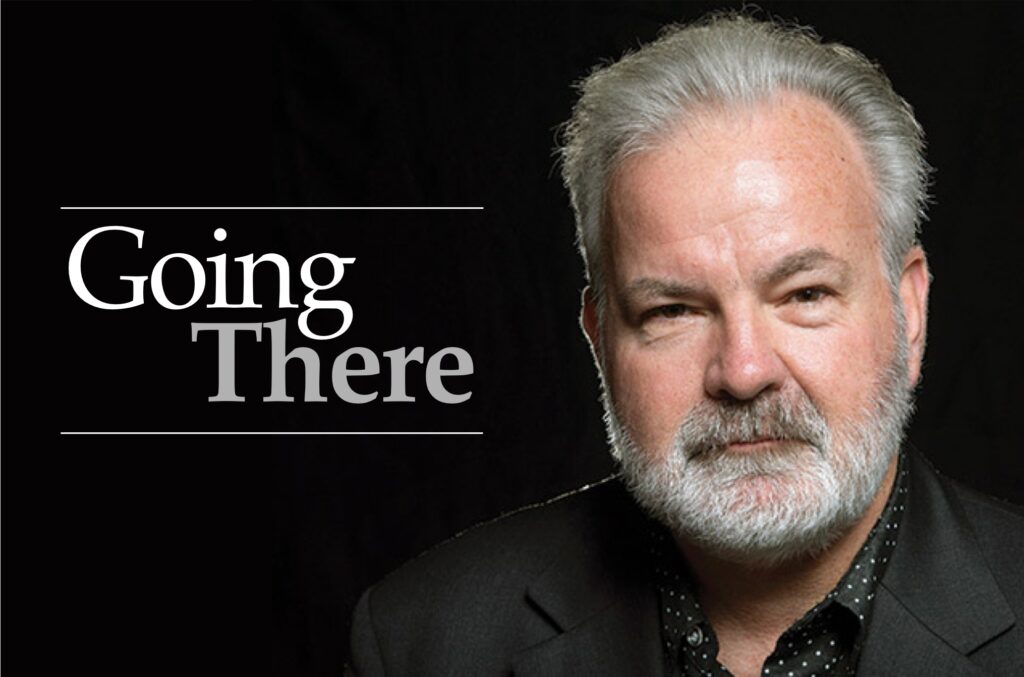Claremont, as it was, as it is
by John Pixley
I think of it nearly every time I pass through the intersection of Bonita Avenue and Indian Hill Boulevard. Still, after all this time, I think of the McIntyres living in the big house on the southwest corner.
It was before I knew them, when Donald came here from Scotland with his wife Ann to teach geology at Pomona College. It was before they lived just around the corner on Twelfth Street, when their son Ewen was my best friend growing up (what are the odds of two boys with Cerebral Palsy living so close to each other?). It was long before they, along with Ewen, moved back to Scotland, where Donald died some years later.
The house was brown then. At least it was brown when I was a kid and heard that the McIntyres once lived in it. It’s gray now, but at least it’s still there.
The gas station isn’t there. That’s right, there was a gas station on the northeast corner. I remember it, vaguely. I think it was a Shell gas station or was it Phillips?
Lots has changed at the Indian Hill/Bonita intersection. The gas station was removed long before there was a round-about there for a short time, as an experiment almost 20 years ago, an experiment that most people (unfortunately, I think) would prefer to forget. There was also a tiny locksmith shop on Bonita Avenue, just east of the gas station.
Of course, Bentley’s Market was also there on Bonita, across the street from the locksmith shop, where Rhino Records is. Bentley’s Market was always there; it was a shock when it wasn’t. How could I forget Ben Harper—who I now hear singing on the radio and TV and who sells out Bridges Auditorium—and the other bag boys competing to see how much they could stuff in the backpack on my wheelchair. I would shop at Bentley’s on my own while I lived briefly a couple blocks away on Bonita Avenue a few doors down from, yes, where the McIntyres had lived. Then again, Rhino Records has always been there.
Yes, it was a shock when Bentley’s Market was no longer in the Village, but it’s still easy to see it there, even as Rhino Records has always been on that Bonita/Yale corner. It’s not so easy to see the locksmith shop and the gas station—a gas station!—on Bonita in the Village.
It’s even harder to see the market that was at the south end of Yale Avenue in the Village, where the Danson Restaurant has, again, “always been.” As I barely remember, it was more like a butcher shop or, am I dreaming, a feed store? And was there also a gas station—another gas station—there?
Then there is the big office building along First Street at the south end of the Village. It’s getting almost as hard to imagine it not being there. Was there a stink when this ugly brown monstrosity was added to the Village? I can’t imagine not, considering there was an uproar over a Starbucks in the Village and the stucco mall on Bonita where the gas station and locksmith shop were.
Not only was there a restaurant in a train car there (Ewen and I thought it was a pretty big deal when our mothers took us there for lunch) but, for quite a long time after the office building was there, there was only diagonal parking, no landscaping, in the center median on First Street.
The “new” part of the Village already isn’t so new. It almost isn’t an addition, almost isn’t Village West, anymore. It’s just the Village, or part of the Village. It is getting stranger and stranger to think that there wasn’t much more there along the west side of Indian Hill Boulevard than a veterinarian office. And, again, what controversy?
Claremont has changed for each of us, and each of us has things in Claremont that we miss or don’t miss. Most of us probably don’t miss the gas stations in the Village—or may not believe they were there—but what about the Book House, the Wild Iris and all the other book stores that were in the Village? What about Raynebeau Rags? Epicurious? And, not that long ago, Casa Flores and Raku? I remember when the COURIER office was on Harvard Avenue, south of the post office; with editor Martin Weinberger perched on a second floor loft, his eye, literally and appropriately, on everything.
No doubt, in five years, I could be writing this again, and places that have been here forever will no longer be here, and the gas station and feed store will be even more faded, crazier memories. Will Video Paradiso end up closing like, as reported in the Los Angeles Times recently, Vidiots in Santa Monica, along with a bunch of other video stores? And with music going digital, what about Rhino Records? Or—say it won’t be so!—the Folk Music Center?
Claremont has changed, and it will keep on changing. The news in these pages a couple weeks ago is that it is changing now. Never mind that I don’t recognize the area next to Padua Hills, with huge houses crowding out the space. (There have been more and more areas north of Base Line and even Foothill Boulevard that I hardly recognize.) Never mind that, a few years ago, it was proclaimed that Claremont was “built out.” According to the recent article, there are several housing projects going up within our borders.
And then there are the Colleges. Years ago, when I knew people attending UCLA, there would be at least one new building going up every time I visited the campus. Never mind that I visited several times a year. In recent years, the same is true at the Colleges here. It seems that every few months or even weeks, if not every time I’m on the campuses, there’s another new building going up.
A year or two ago, it was Harvey Mudd College on a building spree, with a gigantic crane looming over Foothill Boulevard and a steady stream of stories about copper wire being stolen. Now, Pomona College has a big new science center going up on Sixth Street and, a couple blocks over, Claremont McKenna McKenna College continues to go gangbusters with its construction projects. Of course, all these follow major makeovers and face-lifts at Scripps and Pitzer.
But the Colleges are still the Colleges, with the students still coming and still graduating, while on their life paths. And although there are stores and restaurants I miss and others I wonder about in future years, and although there are places I barely remember and hardly recognize, Claremont is still Claremont, alive in more than just our hearts.







0 Comments